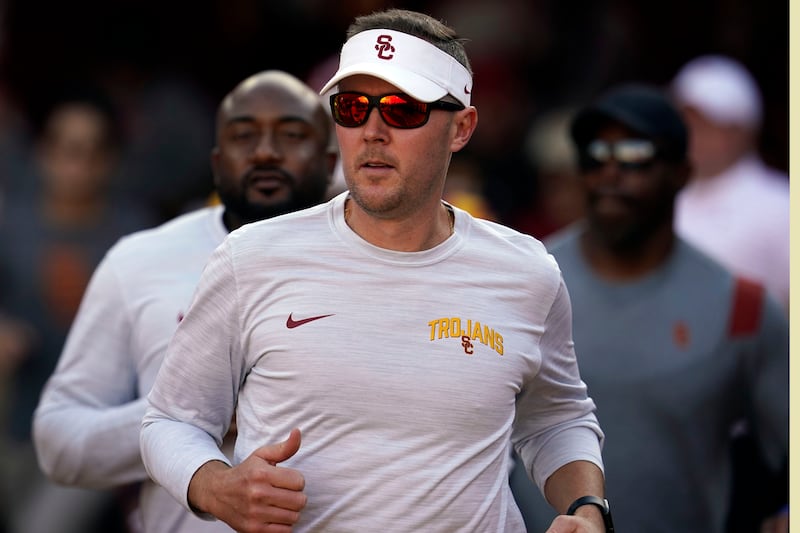“College sports needs to end the Chicken Little act and stop trying to regulate (“guardrails!”) name, image and likeness. Let the free market be the free market.”
That’s what Yahoo columnist Dan Wetzel tweeted last week after Utah athletic director Mark Harlan revealed that a Utah football player had been “offered about a million dollars” to transfer to another school. Harlan expressed his concern about schools poaching players with financial inducements and said others shared his view. Wetzel answered with a column entitled, “If a Utah football player really was offered $1 million to transfer, it’s cause for celebration, not concern.”
Wrong, wrong, wrong.

An unrestricted free market might be fine in the real world, but sports is different. It’s always been different. It’s naive and misguided to think that sports can function otherwise.
“Guardrails” are necessary to maintain competitive balance. That’s why there are salary caps in the professional ranks, limiting what each team can spend on players; otherwise, the richest teams stockpile talent and there are few competitive teams, and then what’s the point?
Competitive balance is why there is revenue sharing among teams; it’s the reason for restricted free agency; it’s why player movement among teams is restricted and players aren’t allowed to flee to other teams whenever they feel like it, even if they’re offered more money (unless his contract has expired); it’s why baseball has been granted an exemption from federal antitrust laws for 100 years and why other sports also are granted exemptions.
No one is arguing that college athletes should be able to earn money from their labors, especially when college sports is raking in billions off their sweat, especially since, in their greed and stinginess, they begrudged athletes anything — even a free pizza — for decades. But there must be restrictions on player movement. The NIL money and the transfer portal are a bad combination in their current form.
“I believe so much in (the NIL), I believe it’s the right thing,” Harlan told Sports Illustrated. “But it’s difficult to not have an enforcement mechanism when we’re running into someone who is clearly utilizing it, in some form or fashion, as inducement. And we’re not. That’s frustrating.”
Player movement is restricted in Little League. It’s restricted in high school sports. It’s restricted in professional sports. But it’s unrestricted in college sports. College athletes have more freedom of movement than professional athletes. And now they can be enticed to leave one school for another with money under NIL rules via boosters or businesses or collectives.
The result is chaos. Aside from the competitive imbalances, the rich get richer and the poor get poorer, and there already is a huge disparity between the two in college football; the odds were already stacked in the favor of a relative few powerful schools, starting with access to the national playoff. At least half of all FBS schools are virtually eliminated from the national playoff before the opening game. Look at the history of college football’s eight-year-old playoff — 25 of the 32 playoff berths have been filled by just six schools, out of a field of 131 schools.
It’s only going to get worse under the current rules, or lack thereof. More than 4,000 football players entered the transfer portal in 2021, up by about 1,200 from the previous year. Its effect on the game cannot be overstated.
Look at what happened to Oklahoma and USC. The Sooners won 11 games last season (against two defeats), which is an average season by their standards. In the offseason their head coach, Lincoln Riley, took the coaching job at USC and several of his best players entered the transfer portal and followed him there. The Sooners are 3-3 this season, and USC, which was 4-8 last year, is 7-1, with a single one-point loss to Utah. Those players shouldn’t have been able to follow him there.
“Obviously, the transfer portal is being manifest how impactful it can be there and at Oklahoma,” Utah coach Kyle Whittingham said before the USC-Utah game. “Oklahoma had mass departures and USC had a mass influx of talent. You can see what’s happening. You can see that teams are able to make major improvement or go the other way — more so than ever before because of the amount of turnover on your roster. There’s far more turnover on your roster now than there ever has been in the modern era of college football.”
When asked how schools can retain players, Whittingham said, “Pay them a bunch of money. … That’s kind of what it comes down to. I’m not accusing anyone of illegal improprieties or anything like that because it’s all above-board now with NIL. But as I’ve said before, there’s going to come a time in the very, very near future where the top 25 NIL pots of money are going to mirror almost exactly the top 25 programs in the country.”
Harlan was also spot on when he responded to Wetzel’s column: “I look at this whole deal as not a ‘Chicken Little’ act but rather how can we maximize for students but still maintain integrity for the game. ... I am all for, as are many of my colleagues, to allow the students to maximize their opportunities. We just have to protect the integrity of the game at the same time. I still believe we can strike the balance.”
Something needs to be done to save what’s left of the competitive integrity of college football. But, as Whittingham noted, “I don’t know how (the NCAA) is going to backpedal now with the can of worms that they’ve opened.”



